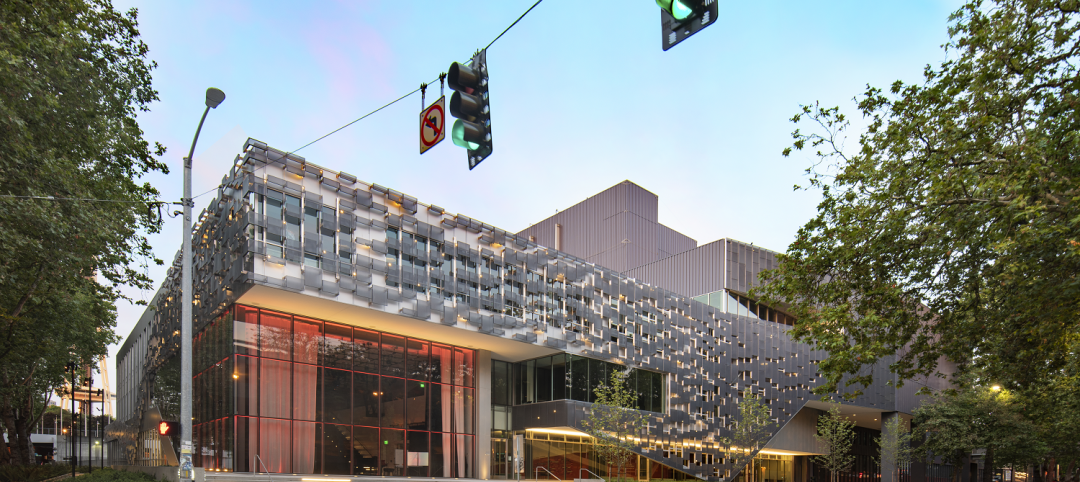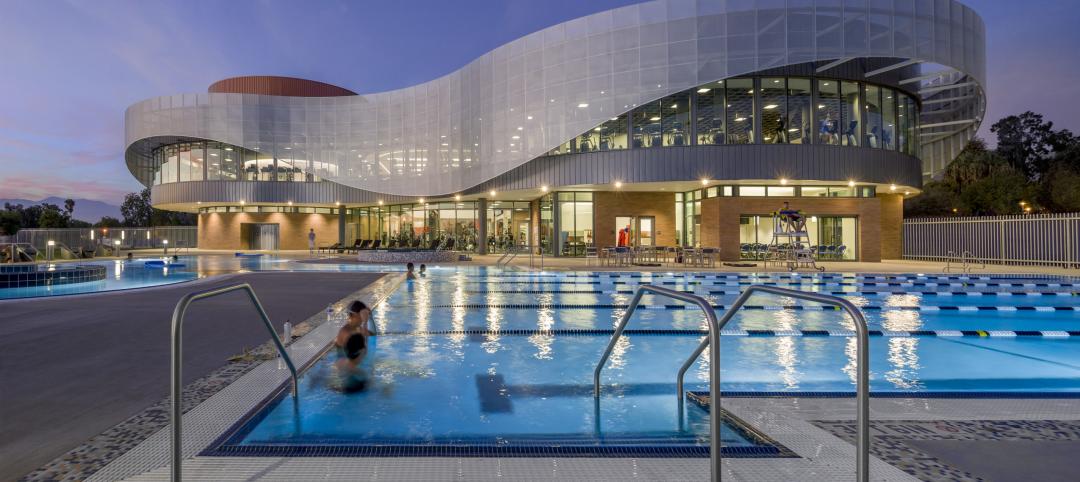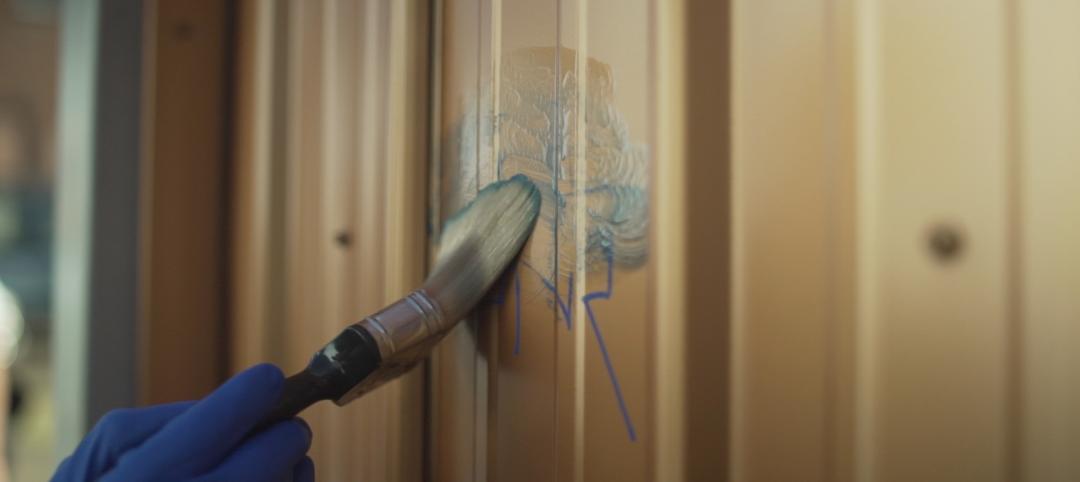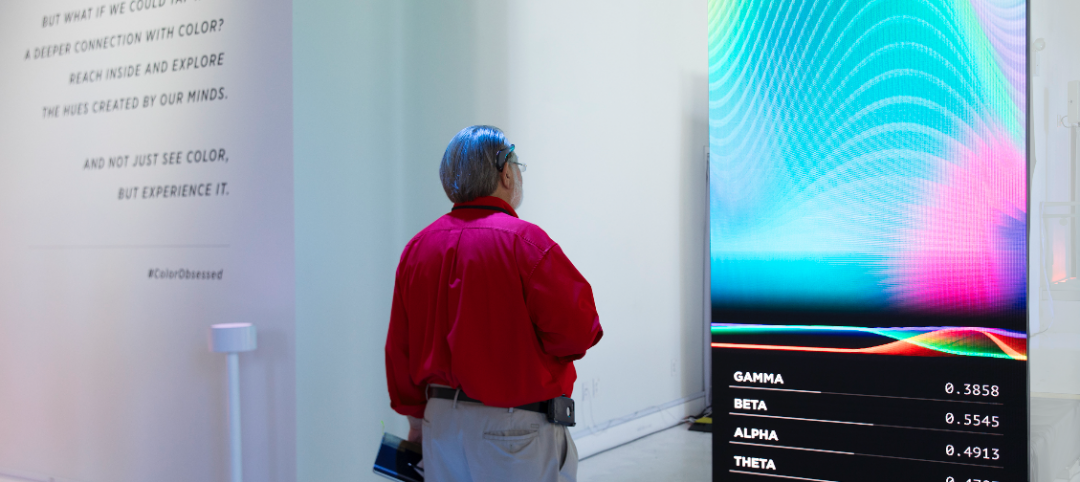Because color is incredibly subjective, personal and situational, it is difficult to study scientifically. There is no conclusive evidence to fully support one color’s beneficial effects on the human mind and body over another color. We each have our personal associations, cultural backgrounds, and even our own eyes’ abilities to differentiate colors, which vary from person to person and change as we age (for instance—did you know the lens inside our eyes tend to yellow as we get older?).
It’s been said that pink can reduce aggression in prison inmates, or that light green is calming and neutral and therefore good for hospitals and schools. The overuse of any color will lead to saturation and monotony that decreases brain activity by being visually unstimulating. However, there are recent studies that narrow their scope to look at some specific, isolated situations that apply to architecture and design.
For instance, as autism awareness becomes increasingly prevalent, there are studies and personal testimony that point to the color red, in its primary form, as being seen as super-intense, fluorescent or pulsating by some persons on the autism spectrum. For many schools—which act as a bridge from home to the outside world for these students—there is a great deal of pressure to respond to the needs of those with sensory issues and to avoid large expanses of the environment being painted in bright red. Red can be used effectively in smaller objects during occupational therapy sessions, allowing the child to adapt to the stimulus.
For those who are looking to spur innovation in the corporate world, that bright, primary red has also been shown in a University of British Columbia study to increase attention to detail, improving proofreading accuracy and alertness to errors. This is in contrast to the color blue, which the same study identified as boosting performance on creative tasks like brainstorming.
In one example, medical office software provider Kareo engaged LPA Inc. to design its new 45,450-sf headquarters at Park Place in Irvine, Calif. To accommodate the company’s rapid expansion, LPA helped envision and create a highly flexible and creative work environment that would expand and evolve to support the company and its clients’ needs. Bold uses of color and contrast were implemented throughout the office, with hues of blue and orange strategically placed to promote creativity, brainstorming and alertness.
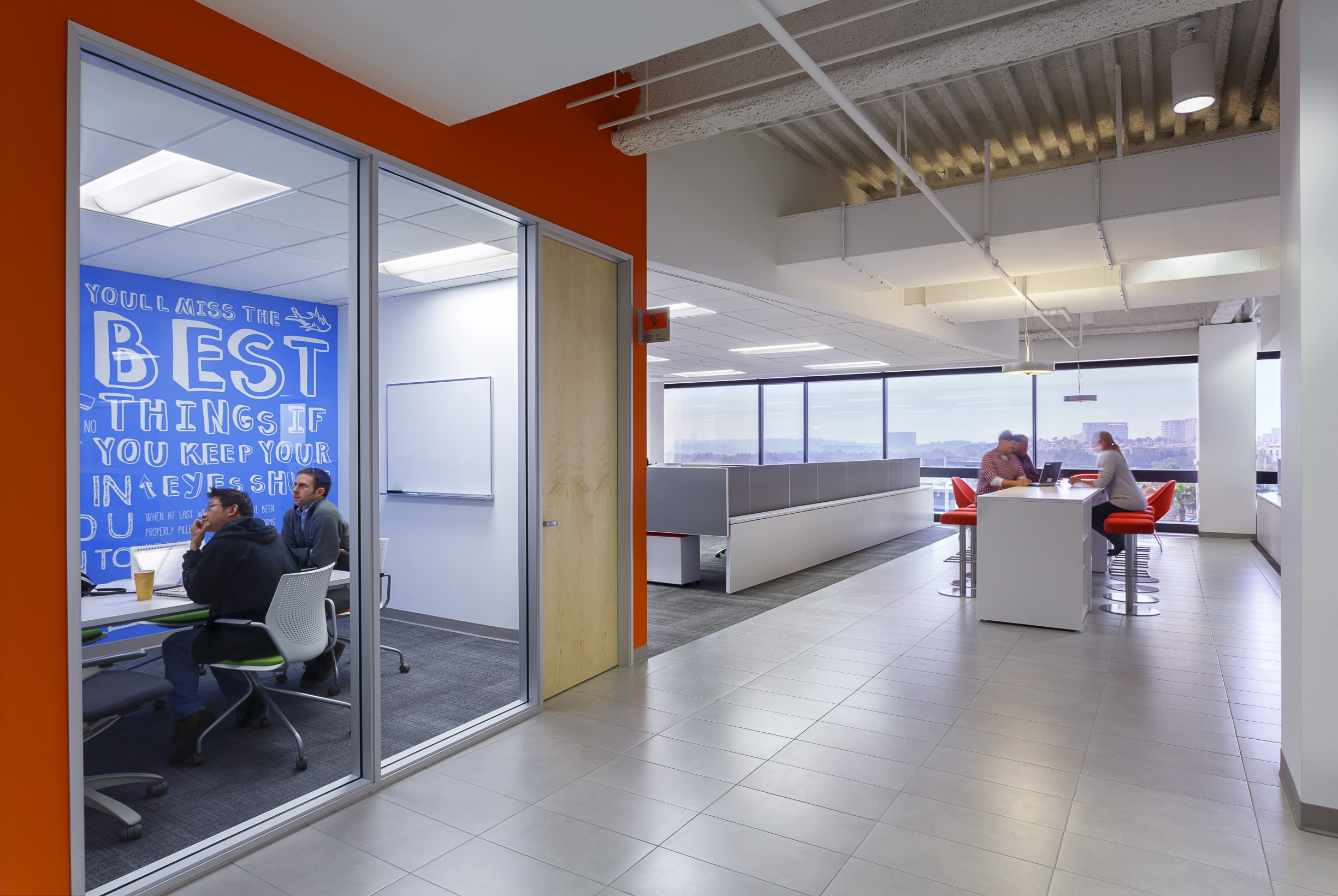
Aside from encouraging creative responses, the color blue is also being used for outdoor lighting in many places, including Scotland and Japan, due to its association with police and security and the deterrence of criminal activity.
While these previous examples focused on the benefits of any one hue over the other, it appears that in learning and working environments, having contrast and variety in the visual field increases brain activity and attention span. In schools, this means having contrasting color accent walls around the room—especially around the typically bright white writing or projection surfaces, to allow the eyes to flex back and forth from dark to light—providing short breaks for the eye muscles.
Contrast, not color alone, also is important to specific segments of the population. The nine percent of men who are color blind, as well as many adults over 40 who find difficulty differentiating colors next to each other on a color wheel, benefit from increased contrast. Designers need to draw upon this knowledge when creating healthcare environments or any community-use civic spaces frequented by the public. It is important to note that variety and balance must also be present with contrast to ensure a space is not overwhelmed by anxiety-inducing uses—think circus stripes. High contrast should be limited to highlighting moments of attention and wayfinding importance, with more subtle areas surrounding, again providing that visual relief and balance to a space.
When designing the palette for your next project, be sure to include end users in the process to gain support and to represent their specific culture and vision for the look and feel of the space. Allow for the users’ eyes to rest and provide stimulation through areas of contrast, especially at areas of long-duration focus. Consider balance in the overall palette, avoiding harsh contrasting bright colors for those with sensory issues—yet also avoid colors too dull and similar-looking to the aging eye. This will establish an aesthetically pleasing environment for all potential users of the space.
Emily Koch is an interior designer and project coordinator for LPA Inc.
Sources
Alter, Adam. (2014, February 25). Drunk Tank Pink: And Other Unexpected Forces That Shape How We Think, Feel, and Behave.
Grohol, J. (2008). Can Blue-Colored Light Prevent Suicide?. Psych Central. http://psychcentral.com/blog/archives/2008/12/13/can-blue-colored-light-prevent-suicide/
Paron-Wildes, A.J. Implications Vol. 6 Issue 4. “Sensory Stimulation and Autistic Children.” (2008).
University of British Columbia. (2009, February 6). Effect Of Colors: Blue Boosts Creativity, While Red Enhances Attention To Detail. ScienceDaily. http://sciencedaily.com/releases/2009/02/090205142143.htm
Related Stories
Sponsored | Coatings | Dec 8, 2022
The Visual Contrast Evolution in Architecture
Subtle shifts in how designers are using contrast
Sponsored | Coatings | Dec 8, 2022
Building Your Custom Color
Personalized design solutions for architects, manufacturers and building owners
75 Top Building Products | Nov 30, 2022
75 top building products for 2022
Each year, the Building Design+Construction editorial team evaluates the vast universe of new and updated products, materials, and systems for the U.S. building design and construction market. The best-of-the-best products make up our annual 75 Top Products report.
Building Materials | Aug 3, 2022
Shawmut CEO Les Hiscoe on coping with a shaky supply chain in construction
BD+C's John Caulfield interviews Les Hiscoe, CEO of Shawmut Design and Construction, about how his firm keeps projects on schedule and budget in the face of shortages, delays, and price volatility.
Sponsored | BD+C University Course | May 5, 2022
Designing with architectural insulated metal wall panels
Insulated metal wall panels (IMPs) offer a sleek, modern, and lightweight envelope system that is highly customizable. This continuing education course explores the characteristics of insulated metal wall panels, including how they can offer a six-in-one design solution. Discussions also include design options, installation processes, code compliance, sustainability, and available warranties.
Sponsored | Coatings | Oct 14, 2021
Identifying Color Trends: Then and Now
Sherwin-Williams Coil Coatings reflects on the life of color trends throughout history and how trend forecasting plays a part then, now and in the coming years.
75 Top Building Products | Dec 12, 2019
Top Building Envelope Products for 2019
Sto's beetle-inspired exterior coating and Dörken Systems' UV-resistant vapor-permeable barrier are among the 28 new building envelope products to make Building Design+Construction's 2019 101 Top Products report.
Sponsored | Coatings | Aug 17, 2018
Anti-graffiti coatings keep projects pristine
The Sherwin-Williams Coil Coating products you know and trust are designed to keep your buildings beautiful and free of graffiti.
Coatings | Aug 2, 2018
MUST SEE: Sherwin-Williams Coil Coatings exhibit explores how architects’ thoughts translate into color
The exhibit, Thinking In Color, debuted in late June at the AIA Conference on Architecture in New York City.



